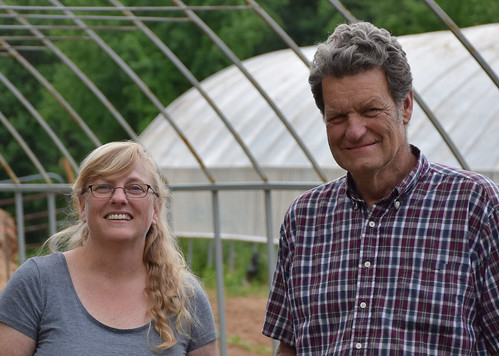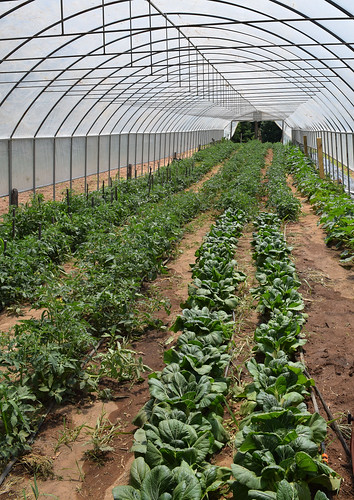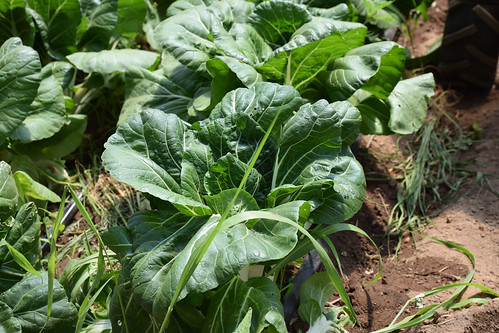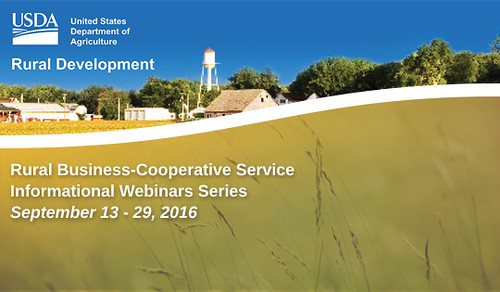<!– Tree Circumference:
Height:
Crown Spread:
Total Points:
Location:,
Publically Accessable:
Nominated By:
Year Nominated:
–>
Found a bigger tree? Nominate it here.
The post Fagus sylvatica appeared first on American Forests.
Found a bigger tree? Nominate it here.
The post Fagus sylvatica appeared first on American Forests.
Found a bigger tree? Nominate it here.
The post Juniperus grandis appeared first on American Forests.
Found a bigger tree? Nominate it here.
The post Ilex aquifolium appeared first on American Forests.
Found a bigger tree? Nominate it here.
The post Ulmus minor appeared first on American Forests.
Found a bigger tree? Nominate it here.
The post Styphnolobium japonicum appeared first on American Forests.
Found a bigger tree? Nominate it here.
The post New Treeicus appeared first on American Forests.

Unlikely partners Brenda Sullivan and Gordon Bednarz share land and grow food, without a formal partnership.
When you meet farmers Gordon Bednarz and Brenda Sullivan, two words come to mind—polar and opposites. But the pair has joined forces in a unique way – sharing land and growing food as partners, without a formal partnership.
And it’s working!
He is the owner of Bednarz Farm in his hometown of Glastonbury. Gordon’s family has been farming there since the 1920s. He farmed his family’s land before and after he graduated from college and throughout his career with the State of Connecticut. Bednarz’s love for the land and dedication to his roots leads him to continue the tradition of old fashioned, New England farming.
In contrast, Mary grew up in California and relocated to the east coast to pursue her education at the University of Connecticut. She began her agricultural career out of necessity. Her daughter’s medical issues led to requirements for a strict, organically-grown diet. Sullivan started a backyard garden, and after much research and networking, she was able to turn her backyard into a business through which she became Connecticut’s first Small Plot Intensive, or SPIN farmer.
The pair met a few years ago at a farmers market and began talking about their passion for all things agriculture. Soon after, Gordon offered Mary a chance to lease a portion of his farm for her ever-increasing crops.

Successful growing is shown in this first-year seasonal high tunnel.
Although he is no stranger to USDA’s Natural Resources Conservation Service (NRCS) and its programs, this year marks Gordon’s initiation into the world of seasonal high tunnels. He applied for the high tunnel through NRCS’ Environmental Quality Incentives Program. Seasonal high tunnels enable producers to begin their growing season early, and go late into the year by shielding the crops from the cold weather.
Bednarz says he sees the tunnel as a way to bring in profits both early and late in the season. Pointing out that during the peak growing season, locally-grown tomatoes are so plentiful you have to practically give them away; he hopes having them available earlier and later will mean greater financial success—keeping his farm going. He’s also noticed the plastic layer of the tunnel keeps the plants better hydrated and shielded from the sun—something quite helpful as this summer continues to be hot and dry.
Although he’s still in testing-mode, Bednarz gives the process a thumb’s up. From the application process, which he reports went seamlessly, to his very successful early tomatoes and colorful kale, he’s happy so far. So happy, in fact, that he has mentioned sharing a portion of tunnel space with Mary for her latest venture—growing tea.
Using Gordon’s years of Yankee ingenuity, and Mary’s knack for promotion and social media, the two have started their own Community Supported Agriculture (CSA) venture. They are continuing the trend of growing and selling together, but separate.
So what makes two such different people work together so well? Philosophy. Asked separately, they both had eerily similar answers: live a locally focused life; do what comes naturally; live as naturally and simply as possible; be open to opportunities; and, most importantly, help each other.
Looks like they’ve got it covered.

Healthy greens growing in the seasonal high tunnel.
I have a post at Nate Silver’s 538 site on how we can predict annual surface temperature anomalies based on El Niño and persistence – including a (by now unsurprising) prediction for a new record in 2016 and a slightly cooler, but still very warm, 2017.
The key results are summarized in the figures that show how residual variations in the global temperatures (after detrending) related to the ENSO phase at the beginning of the year (defined using the MEI), and the predictions for 2016 (two methods) and 2017.


Note that this analysis was done with only data until July. With the August data included as well, there is a small reduction in the uncertainty (purple bar), but the mean prediction is basically unchanged. I think this might be the first prediction for the 2017 annual mean specifically – we’ll have to wait ~18 months to see how it pans out.
I’m happy to get deeper into the analysis here if there is interest. Additionally, I’d be interested in ideas and/or suggestions for climate issues that might fit the 538 style for followup posts.

USDA RBS will host a series of informational webinars to share success stories on how customers and partner organizations have used RBS programs and resources to support businesses in rural and Tribal communities.
When President Lincoln established the U.S. Department of Agriculture (USDA) more than 150 years ago, he called it “the People’s Department” because USDA addresses the vital interests of the people. Now, more than ever, it is necessary for USDA to collaborate across federal agencies and into local community-building institutions to meet the unique challenges faced by the people of rural America.
USDA Rural Development (RD) plays a key role in supporting the diverse communities in rural America. The incredible resilience, hard work, and enduring cultural values of our rural population embody the beauty of America and are worth cherishing.
According to USDA’s Economic Research Service, nearly 85 percent of the nation’s persistently poor counties are in rural America. In 2010, the USDA StrikeForce for Rural Growth and Opportunity was created to mobilize our staff in regions needing the most assistance. Through the StrikeForce initiative, USDA has strengthened partnerships across our many agencies to provide underserved communities greater access to not only the funding tools available within the USDA, but the resources of our partner agencies and organizations. Since its inception, more than 1,500 StrikeForce partnerships have helped USDA support nearly 190,000 projects with a total investment of $23.5 billion in high-poverty areas in rural America. Nearly 1,000 rural counties, parishes, boroughs, and census areas have been served nationwide through StrikeForce.
In 2013, the White House established the Promise Zone initiative, which requires federal agencies to commit, collaborate, and provide well-coordinated assistance to designated communities. Through these efforts, community leaders and partner organizations are provided the resources and empowerment to organize, plan, and immediately access technical and financial assistance to meet their economic needs. Over $410 million in federal investments were successfully delivered in the Choctaw Nation, Pine Ridge Indian Reservation, Southeastern Kentucky, and the South Carolina Low Country in just two years.
All this month, USDA is focusing on how “Rural America is Back in Business.” As part of that effort, USDA Rural Business-Cooperative Service (RBS) is hosting a series of informational webinars to share success stories from across the country. These stories will provide details on how local community organizations are using USDA programs along with multiple federal and private sector resources to support their businesses in rural and Tribal communities.
Customers and stakeholders interested in learning more about RBS programs—and how customers have used our financing tools to support entrepreneurship are encouraged to participate in this opportunity to engage with diverse partner organizations, ask questions, and explore the opportunities USDA has to offer.
As was certain 150 years ago, rural Americans continue to be the backbone of our great country thanks to their resilience, grit, and family values. As we raise a new generation that is full of energy, potential, and opportunity, RD is committed more than ever to protect these values and to empower the people of rural America to achieve their dreams.
Heat waves kill hundreds to thousands of people around the world every summer. Global warming is making it worse. An especially hot summer day today will be a normal summer day in the future. And the rare, deadly heat wave of today will become common. In this post we’ll take a deep dive into the medical aspects of heat illness and the link to climate change. According to the CDC, heat is the leading cause of weather related death in the US. From 1999 to 2009 heat exposure killed 7,800 people. Not only that, but heat makes chronic medical problems Continue reading Climate Change, Deadly Heat and You
The post Climate Change, Deadly Heat and You appeared first on The Climate Advisor.